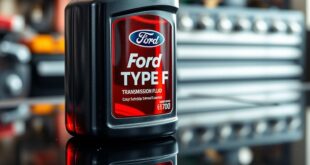If your vehicle specifies 5W20, using 5W30 can lead to increased engine wear and reduced fuel efficiency. While 5W30 can be used temporarily, it doesn't provide the same lubrication in colder conditions. This difference matters, especially during hot weather. Always check your manufacturer's guidelines to guarantee you're using the right oil. For ideal engine performance and longevity, sticking to the recommended viscosity is essential. Learn more about proper oil selection to protect your engine.
Understanding Oil Viscosity Ratings
Understanding oil viscosity ratings is essential for maintaining your vehicle's engine health. Viscosity indicates how easily oil flows at different temperatures.
For instance, 5W20 has a lower viscosity than 5W30, meaning it flows more freely in cold conditions. The "W" stands for winter, while the numbers represent the oil's thickness at high temperatures.
When temperatures rise, 5W30 provides better lubrication due to its higher viscosity, protecting your engine from wear. Using the right viscosity guarantees peak performance and longevity.
Always check your vehicle's manual to choose the best oil, as improper viscosity can lead to engine issues over time.
Manufacturer Recommendations for Different Brands
Choosing the right oil viscosity is only part of the equation when it comes to maintaining your vehicle's engine health. Different manufacturers have specific recommendations you should follow.
For Ford, using 5W20 is essential, though 5W30 is acceptable in F150 models.
Hyundai and Kia vehicles primarily require 5W20, while Kia allows 5W30 if 5W20 isn't available.
Both Jeep and Honda can use either oil, but 5W20 is preferred.
Toyota recommends 5W20 but permits 5W30 in emergencies.
Always consult your owner's manual to verify you're using the recommended oil for peak performance and longevity.
The Impact of Seasonal Changes on Oil Performance
As temperatures fluctuate with the changing seasons, the performance of motor oils like 5W20 and 5W30 can considerably vary.
Understanding how these oils react to different climates can help you make the best choice for your vehicle.
- Winter: 5W20 excels in cold conditions.
- Summer: 5W30 provides better lubrication in heat.
- Transition Seasons: Monitor temperatures; switching might be necessary.
- Engine Protection: Choose oil based on seasonal demands to guarantee peak performance.
Functions and Benefits of Motor Oil
Motor oil plays a critical role in maintaining your engine's health and performance, as it not only lubricates moving parts but also helps dissipate heat and prevents corrosion.
It creates a protective barrier that reduces friction, allowing components to move smoothly and efficiently. Additionally, motor oil carries away dirt and contaminants, keeping your engine clean.
Risks of Using 5W30 in Place of 5W20
Maintaining your engine's health through proper oil selection is vital, and using the wrong viscosity can lead to serious consequences.
If you use 5W30 instead of 5W20, you may face several risks, including:
- Increased engine wear due to inadequate lubrication
- Poor fuel efficiency, leading to higher costs
- Overheating in high-temperature conditions
- Potential engine damage, particularly in vehicles requiring 5W20
Choosing the correct oil is important to guarantee peak performance and longevity of your engine.
Always consult your vehicle's manual and prioritize manufacturer recommendations to avoid these risks.
Temporary Oil Swaps: What You Need to Know
If you're ever in a pinch and can't find the recommended 5W20 oil, you might consider using 5W30 temporarily. This swap can help keep your engine running until you find the right oil.
However, be cautious—5W30 has a different viscosity and may not perform as well in high temperatures, potentially impacting engine health. Always check your vehicle's manufacturer guidelines before making this decision.
If you do use 5W30, monitor your engine's performance closely and switch back to 5W20 as soon as possible for ideal lubrication and protection.
Best Practices for Oil Selection and Maintenance
Choosing the right oil for your vehicle goes beyond just picking a number off the shelf.
You need to take into account your engine's specific requirements and guarantee proper maintenance.
Follow these best practices:
- Always check your owner's manual for manufacturer recommendations.
- Choose high-quality oil brands that meet industry standards.
- Regularly change your oil and filter to maintain engine health.
- Monitor oil levels and look for signs of leaks or discoloration.
Frequently Asked Questions
How Often Should I Change My Engine Oil?
You should change your engine oil every 5,000 to 7,500 miles, depending on your vehicle's make and model. Always check your owner's manual for specific recommendations to keep your engine running smoothly.
What Are the Signs of Low Oil Levels?
If you notice engine noise, warning lights, or a drop in oil pressure, it's likely you've got low oil levels. Regularly check your oil to prevent potential damage and guarantee your engine runs smoothly.
Can I Mix Different Brands of Motor Oil?
You can mix different brands of motor oil, but it's best to stick to the same viscosity and oil type. Using compatible oils guarantees peak performance and engine protection, so check your vehicle's specifications.
Is Synthetic Oil Better Than Conventional Oil?
When considering synthetic versus conventional oil, you'll find synthetic generally offers better performance, protection, and longevity. It's designed to withstand higher temperatures and reduce engine wear, making it a superior choice for your vehicle's health.
How Can I Tell if My Oil Is Degraded?
To tell if your oil's degraded, check its color; it should be amber. Also, look for a gritty texture or a burnt smell. If you notice these signs, it's time to change the oil.
 Car Service Land Coupons for Oil change, Tires, Wheel alignment, Brakes, Maintenance
Car Service Land Coupons for Oil change, Tires, Wheel alignment, Brakes, Maintenance




